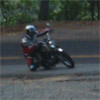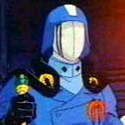|
Geirskogul posted:What are your tire pressures? 30psi cold when it was happening on the track; 36 cold now. edit: I guess I should note rear too. Meh, I do 30/29 cold at the track and 36/38 on the street to preserve the drat tires. BlackMK4 fucked around with this message at 14:29 on Jul 11, 2014 |
|
|
|

|
| # ? May 31, 2024 20:50 |
|
Roughly what kind of strength resistor do I need when replacing conventional indicators with LEDs? Is there some special secret voodoo in the "universal" ones being sold that justify them costing more than the indicators themselves? (£10 each and I need 4 of them apparently, and replacing the flasher relay isn't an option without tearing my instrument panel apart).
|
|
|
|
Why switch to LED, then? The entire point, I thought, was to reduce power usage. Adding a big power resistor to get the flasher to work defeats the purpose of them. I've converted quite a few cars to LED (1998 Explorer, 1997 Subaru Outback, my Enfield motorcycle, my 1972 Beetle, 1983 Ford Ranger, 2004 Dodge Ram), and on every one, fixing the flasher was much easier than wiring resistors to each, even with tearing the panel apart.
|
|
|
|
Geirskogul posted:Why switch to LED, then? The entire point, I thought, was to reduce power usage. Adding a big power resistor to get the flasher to work defeats the purpose of them. I've converted quite a few cars to LED (1998 Explorer, 1997 Subaru Outback, my Enfield motorcycle, my 1972 Beetle, 1983 Ford Ranger, 2004 Dodge Ram), and on every one, fixing the flasher was much easier than wiring resistors to each, even with tearing the panel apart. Better brightness/visibility, form factor (if you're installing aftermarket indicators). It isn't so much a big power resistor as it is just matching the impedance the flasher relay is designed for so it flashes at the correct interval. You don't save any power, but it doesn't create any additional load. Also, Twisto's Shiver is gonna have a pretty robust power system. The GT has a built in 12v outlet, and it'll charge the battery at idle no problem.
|
|
|
|
Geirskogul posted:Why switch to LED, then? The entire point, I thought, was to reduce power usage. Adding a big power resistor to get the flasher to work defeats the purpose of them. I've converted quite a few cars to LED (1998 Explorer, 1997 Subaru Outback, my Enfield motorcycle, my 1972 Beetle, 1983 Ford Ranger, 2004 Dodge Ram), and on every one, fixing the flasher was much easier than wiring resistors to each, even with tearing the panel apart. Wiring in a resistor is thirty seconds plus about the same deciding where to mount it and sticking it down. On (most) cars and on other bikes I've looked at the flasher relay is a plug-in unit somewhere convenient in the engine bay or under the seat, on the Shiver it's soldered in to the same circuit panel as the rest of the instruments and there's no loving way I'm going near that lot with a soldering iron. Linedance posted:Better brightness/visibility, form factor (if you're installing aftermarket indicators). It isn't so much a big power resistor as it is just matching the impedance the flasher relay is designed for so it flashes at the correct interval. You don't save any power, but it doesn't create any additional load. Also, Twisto's Shiver is gonna have a pretty robust power system. The GT has a built in 12v outlet, and it'll charge the battery at idle no problem. My shiver has a 12v outlet *and* a 5v USB outlet
|
|
|
Geirskogul posted:Why switch to LED, then? The entire point, I thought, was to reduce power usage. Adding a big power resistor to get the flasher to work defeats the purpose of them. I've converted quite a few cars to LED (1998 Explorer, 1997 Subaru Outback, my Enfield motorcycle, my 1972 Beetle, 1983 Ford Ranger, 2004 Dodge Ram), and on every one, fixing the flasher was much easier than wiring resistors to each, even with tearing the panel apart. Because some bikes have absolutely ghastly indicators from the factory. That's the only reason I've ever switched to LED ones. I can't imagine any theoretical power saving would be even measurable on a bike with three digit horsepower.
|
|
|
|
|
Yeah, for a second I thought I was in AI, not CA, hence my "why not just swap the indicator behind the dash" comment earlier. My bad. I seem to have a penchant for older vehicle with lovely charging systems (Bullet 500, CB650, Beetle, Ranger), so most of my LED conversions have been for power reduction. Switching four 13 or 21W bulbs to 3 or 5W LEDs (along with license plate lights and accessory lights) has been the difference between charging and discharging around town, especially at night, in those. I had no idea that his turn signal flasher would be soldered in (or a digital unit).
|
|
|
|
Slavvy posted:Because some bikes have absolutely ghastly indicators from the factory. That's the only reason I've ever switched to LED ones. I can't imagine any theoretical power saving would be even measurable on a bike with three digit horsepower. The Shiver indicators are actually pretty sexy but mine are just starting to look a bit ragged (one of them has algae growing inside it, hooray British climate) and a mate has a nice set of LED indicators he's willing to let me have for cheap (bought for his own bike but he can't work out a way to mount them, whereas they look like they'll bolt straight on to mine).
|
|
|
|
BlackMK4 posted:30psi cold when it was happening on the track; 36 cold now. Have you made sure nothing is bent/out of alignment after your accident?
|
|
|
|
Z3n posted:Have you made sure nothing is bent/out of alignment after your accident? I guess I should figure out how to have the frame and forks measured - we don't have places like you do in Cali out here :/ I figured the frame is good because the steering stops aren't dented but I guess that is just wishful thinking. What can I use to check the forks? When I put the forks in the triples with the axle in they don't want to sit the same height in the triples without a little bit of pressure - like 1-2mm difference. It was the same way on my 675 and it was never crashed to my knowledge so I kinda assumed it was normal.
|
|
|
|
Does anyone in Seattle want to help me with a valve check on a ninja 250? Shops are quoting me 3 hours of labor ($240) and since I've done it before on a truck, I am thinking about attempting it on the bike. It would be nice to have a second pair of eyes though. I will buy you beer or something.
|
|
|
|
goddamnedtwisto posted:Roughly what kind of strength resistor do I need when replacing conventional indicators with LEDs? Is there some special secret voodoo in the "universal" ones being sold that justify them costing more than the indicators themselves? (£10 each and I need 4 of them apparently, and replacing the flasher relay isn't an option without tearing my instrument panel apart). To actually answer this question, no, you don't need any special bike-specific resistors. Find the spec for the original turn signal bulb (eg. 23 watts), calculate the resistance required to produce a 23-watt draw: P (power) = 23 watts; V (voltage) is nominally 12 volts P = (V^2) / R 23 = (12^2) / R 23 = 144 / R R = 144 / 23 R ~= 6.26 So the bulb has a load of 6.26 ohms. (You could also measure the bulb itself with a multimeter, but the resistance will change as the bulb heats up so this way is more reliable if you know the intended power figure). Then you just need to find a resistor that has a similar resistance to what you've calculated, and a power rating higher than the bulb's power. In this case a 25-watt 6-ohm resistor would do the trick. Put one on each signal to represent the bulb. You can increase the power rating as much as you want; it will run cooler but be physically larger. A resistor rated for less than 23 watts risks overheating and burning out. Changing the resistance will change the blink rate, but which direction and how much depends on the specific type of flasher you're replacing. I would suggest just getting a new electronic relay; I sure did. Sagebrush fucked around with this message at 01:53 on Jul 12, 2014 |
|
|
|
MrKatharsis posted:Does anyone in Seattle want to help me with a valve check on a ninja 250? Shops are quoting me 3 hours of labor ($240) and since I've done it before on a truck, I am thinking about attempting it on the bike. It would be nice to have a second pair of eyes though. I will buy you beer or something. I've done it myself and didn't have too much trouble. It was certainly easier than removing the carbs and cleaning them (and putting those assholes back on). I'm assuming you've been here. I'm not in Seattle, but if you want to ride down to Chicago, I'll hook you up. It's even nice and rainy here today.
|
|
|
|
Bugdrvr posted:I would replace the boot o-rings, go through the carbs one more time to make sure nothing is goofy and try again. If it idles good sync them up and off you go for infinity miles (it is an aircooled Suzuki after all). It will never run worth a poo poo if there are air leaks so you've pretty much got your answer with the RPMs going up when you spray cleaner on them. So, I went to do this today. First I re-installed the mixture screws that I had put in upside down. Tried the bike, runs much better, but still doesn't idle off the choke. I wanted to try the carb spray test once again. But this time when I started it, it cranked once, then made this weird wheezing sound. Now, it clicks once and sounds like there's air being let out and the RPM's go up to 1k. I've been using a car jump starter battery to keep from draining the bike's battery. Did I just blow up the starting system? The fuses are fine.
|
|
|
|
I don't know what would make that noise. It might click and then you'd hear the starter whine a bit if it doesn't have enough power. If you hook it up to the bike battery does it sound normal again? Having the fuel screws put together improperly will cause all sorts of bad things. I would seriously just replace those carb boot o-rings. Taking the carbs on and off is such a pain on that bike and they already checked bad. You can take an old one out and go to a Napa (or other real parts store) and match up a set of Viton rings and be on your way. It will probably cost you all of $10 and then you will have one more variable gone. Just FYI my bike doesn't idle off the choke until it's somewhat warm. I can keep it running just fine with a bit of throttle from cold but if I let it go it wants to die until I've ridden it for 5-10 minutes. Once it's warm it idles at a steady 1000 or so. If you can get it to run nice when cold with just a touch of throttle then you might be pretty close and just need to ride it around and let it warm up.
|
|
|
Sagebrush posted:To actually answer this question, no, you don't need any special bike-specific resistors. Find the spec for the original turn signal bulb (eg. 23 watts), calculate the resistance required to produce a 23-watt draw: He said his flasher relay is part of his cluster so he has no choice in the matter.
|
|
|
|
|
Slavvy posted:he has no choice in the matter. There's something in here about Italian bikes, but I can't quite put my finger on it.
|
|
|
|
Hey guys I was wondering if there was any merit behind my fear of taking somewhat sharp corners on steep hills, like 8% grade or steeper. I just feel like I'm riding a fine line between leaning over and losing it, even though I take them pretty slow. It's my third season riding and a new bike but still I just always feel weird riding downhill.
|
|
|
|
Rotwang Gorbochoff posted:Hey guys I was wondering if there was any merit behind my fear of taking somewhat sharp corners on steep hills, like 8% grade or steeper. I just feel like I'm riding a fine line between leaning over and losing it, even though I take them pretty slow. It's my third season riding and a new bike but still I just always feel weird riding downhill. Yep, just keep riding. You'll eventually get used to it. The key is to absofuckinglutely not stare at the guardrail and keep your eyes around following the curve. Everything else is natural from there. It gets more fun when you've got to mix in some light engine braking to keep yourself from running into the rear end in a top hat in an Oldsmobile in front of you who decided to lay on the brakes 3/4 through the turn.
|
|
|
|
HotCanadianChick posted:There's something in here about Italian bikes, but I can't quite put my finger on it. Oh definitely, the fantastic (and oh so Italian) thing is that it's not a relay, it's a solid-state component... that for some reason still flashes too fast if you put LEDs on it. That takes a very special kind of genius.
|
|
|
|
So over in the Ninja 250 thread, I came to discover that I probably misplaced the nozzle on my petcock as I was removing all the hoses to clean my carbs and didn't notice it come off with the tube. Can I just cram any old thing that will stay in and fit the tube, or do I have to find a replacement or new petcock? This is the piece I'm talking about. 
|
|
|
|
It looks like you have a vacuum activated petcock. It should connect to the carbs so that fuel only flows when it is on prime or the bike is running. Did you block off the connector on the carbs? Otherwise you are going to have a massive vacuum leak. My KZ1000P would run like poo poo if it wasn't connected and you can hear a loud sucking sound. Connect it back up unless you have purposely decided to go with a manual petcock setup.
|
|
|
|
So I am finally on reassembly of the C14 after the valve clearance job and I have a bit of an issue I can see coming up. One of my cam holder caps has a bolt which is so close to the motor mount I could only remove it with a basic allen key, there was no room for a wrench at all. This means I won't be able to put my torque wrench onto it for reinstalling it properly. Ideas on how to get it reasonably close to the proper torque? I can probably get it "close" with feel, but since it's torquing down bearing surface I'd like to be as accurate as possible. I think I might try and see how many degrees it turns after finger tight or something with the proper wrench and try to duplicate with the allen key, but if anyone has a better idea I'm It needs to end up around 100 inch/lbs (8ft/lbs) (I do have the value in my manual, but its around there) so it's not crazy tight.
|
|
|
|
I have the other tub connected to the carbs and the petcock turned off. I haven't had a fuel leak so far, so I think I'm good as far as that goes.
|
|
|
|
slidebite posted:So I am finally on reassembly of the C14 after the valve clearance job and I have a bit of an issue I can see coming up. can you get the allen key in like ¬ or does it have to be with the long end in the bolt? If the former, put an extender of some sort on the long end so that it's about the same length as your torque wrench, then apply the same torque as the other bolts. You can practice by just tightening a bolt to 100in/lbs on the bench with a torque wrench, then apply the same feel torque to the bolt on the engine. You'll be close enough. You could also torque all the other bolts by hand with the allen key to the same amount, mark them, then torque them the rest of the way with the wrench, then hand tighten the remaining bolt by hand to the same distance past the mark as the others if you want to be really anal about it. Finger Prince fucked around with this message at 16:03 on Jul 13, 2014 |
|
|
|
It is the the way you drew it, and the extender I have is quite a bit longer and a fairly heavy pipe which might make it tough, but I can probably do that. I think I prefer the idea of marking a couple that I can get on the wrench on them and duplicating it though. Appreciate the ideas 
|
|
|
|
Did a retarded 9 hour ride yesterday, and I appear to be getting roughly 23.5/kmpl or 66.5/MPG. Is this "good" for a 32 year old 450cc engine?
|
|
|
|
Rime, yeah, that's good. Slidebite, the important thing is consistent torque, not exact torque - just do it by hand, it'll be fine as long as it doesn't back out.
|
|
|
|
Rime posted:Did a retarded 9 hour ride yesterday, and I appear to be getting roughly 23.5/kmpl or 66.5/MPG. Is this "good" for a 32 year old 450cc engine? It's difficult to say because it'll depend on the exact engine, plus how tiny/economical it is vs how much you need to wring it out go get anywhere, but I'd say it's about right. My 80s 600cc thumper got 23kmpl.
|
|
|
|
slidebite posted:It is the the way you drew it, and the extender I have is quite a bit longer and a fairly heavy pipe which might make it tough, but I can probably do that. Don't worry about degrees, worry about feel. If all that mattered was the amount of degrees a fastener got turned through we wouldn't even need torque wrenches, just protractors. Get an idea what the pressure on your fingertips is at the same length as the hex key when you hit the right torque. I'm a great believer in the "grunt" - the amount of noise you make as you tighten the fastener - as the universal unit of torque. Most nuts need about half a grunt, brake and engine bolts need one grunt, wheel nuts need about a grunt and a half. Two grunts is where you start to worry about stripping threads/damaging heads with cheap fasteners. The great thing about the grunt is if you're using wrenches rather than a socket set that it scales pretty well with the tool - one grunt on a 4mm hex key is way less torque than a 10mm crescent, and that's also an appropriate different amount of force for those fasteners.
|
|
|
|
I'm going to be applying heat-resistant paint to my exhaust which has got quite rusty. First off, is a good hard scrub with Emory board (40 grade sandpaper, I think) sufficient to prepare the exhaust? Second, when I'm spraying it, how does one go about making multiple thin coats? One coat, wait for it to touch dry, then another? Or can you go faster than that (so I can cure it in time)?
|
|
|
|
Wootcannon posted:I'm going to be applying heat-resistant paint to my exhaust which has got quite rusty. First off, is a good hard scrub with Emory board (40 grade sandpaper, I think) sufficient to prepare the exhaust? Second, when I'm spraying it, how does one go about making multiple thin coats? One coat, wait for it to touch dry, then another? Or can you go faster than that (so I can cure it in time)? Wire brush first, then coarse paper, then a really thorough wash with alcohol, then appropriate primer unless you want to bother going all the way back to bare metal. You should also check the paint you're going to use because some absolutely require primer whether or not the metal is clean. Specifically with exhausts you should keep an eye on the weather forecast - you want to do it on a dry day as soon as possible after rain, because most heat-resistant paint needs a large amount of heat to cure, and unless you've got an unusually large oven the only way to do it is to take the bike out for a ride, so you want a dry day after rain to knock dust out of the atmosphere and off the roads. Also my personal top tip for painting exhausts - bend a wire coat hanger almost straight, hook it over a washing line, then feed it through the pipe to hang it up, it'll make your life so much easier than trying to hold it and paint it at the same time. e: Just noticed it was you Wootcannon so probably try and find a big oven rather than wait for a dry day...
|
|
|
|
We're actually having that weather pattern just now! And I have taken the advice of other bike forums and bought plastikote woodstove spray paint, no mention of primer. Cheap enough, so if that was a poo poo choice feel free to advise, bearing in mind it's a 125 I'm getting ready to sell.
|
|
|
|
I wouldn't recommend using a wire brush, when I painted my exhaust the metal was soft enough that the wire brush scratched it. Just rough sandpaper was fine. I also didn't need to use any primer. For multiple coats follow the directions on the spray can, the paint I used you had to wait quite a while between coats. Also, even after letting it dry a whole night, the paint was still a bit tacky; I tried hitting it with a heat gun but that didn't really help. While mounting the can I actually managed to embed some finger prints in the paint. Thankfully not anywhere where you'd notice.
|
|
|
|
High Protein posted:I wouldn't recommend using a wire brush, when I painted my exhaust the metal was soft enough that the wire brush scratched it. Just rough sandpaper was fine. I also didn't need to use any primer. For multiple coats follow the directions on the spray can, the paint I used you had to wait quite a while between coats. Also, even after letting it dry a whole night, the paint was still a bit tacky; I tried hitting it with a heat gun but that didn't really help. While mounting the can I actually managed to embed some finger prints in the paint. Thankfully not anywhere where you'd notice. the brush is just for the rusty areas to knock off the worst of it - should probably have made that clear.
|
|
|
|
goddamnedtwisto posted:Don't worry about degrees, worry about feel. If all that mattered was the amount of degrees a fastener got turned through we wouldn't even need torque wrenches, just protractors. Get an idea what the pressure on your fingertips is at the same length as the hex key when you hit the right torque. That said, I did just end up going by feel and torqued up the caps in 3 stages. Feels fine and only thing that's giving me a sick feeling in my stomach now is after I buttoned it up everything I realized that while I oiled up the bearing caps and that area of the cam, I didn't put much extra oil on the buckets themselves. Oh well, I'm sure it'll rattle nice for a second or two on initial start up 
|
|
|
|
That's no big deal, don't worry about it 
|
|
|
|
I'm buying replacement handlebars as mine bent in a crash a few months ago. The parts site shows several handlebar weights (parts 11, 13 and 14) as a part of the assembly. Are these critical parts that I have to replace if mines are bent or broken?
|
|
|
|
My forks are squishy. The cbr500r forks don't have any adjustments you can change, unless you do you work with pvc pipe. 21500 miles and 2 crashes later it's noticeably squishy, and I compared it to the showroom cbr500r, it's not the same. Do I just need to get new springs for the forks? It has me a little worried and just doesn't feel right.
|
|
|
|

|
| # ? May 31, 2024 20:50 |
|
McLarenF1 posted:I'm buying replacement handlebars as mine bent in a crash a few months ago. The parts site shows several handlebar weights (parts 11, 13 and 14) as a part of the assembly. Are these critical parts that I have to replace if mines are bent or broken? Not critical, the bars will just vibrate more. Or you could fill the bars with lead shot/sand/whatever. Weird how many things are in there. Schroeder91 posted:My forks are squishy. The cbr500r forks don't have any adjustments you can change, unless you do you work with pvc pipe. 21500 miles and 2 crashes later it's noticeably squishy, and I compared it to the showroom cbr500r, it's not the same. Do I just need to get new springs for the forks? It has me a little worried and just doesn't feel right. Have you replaced the oil?
|
|
|



























